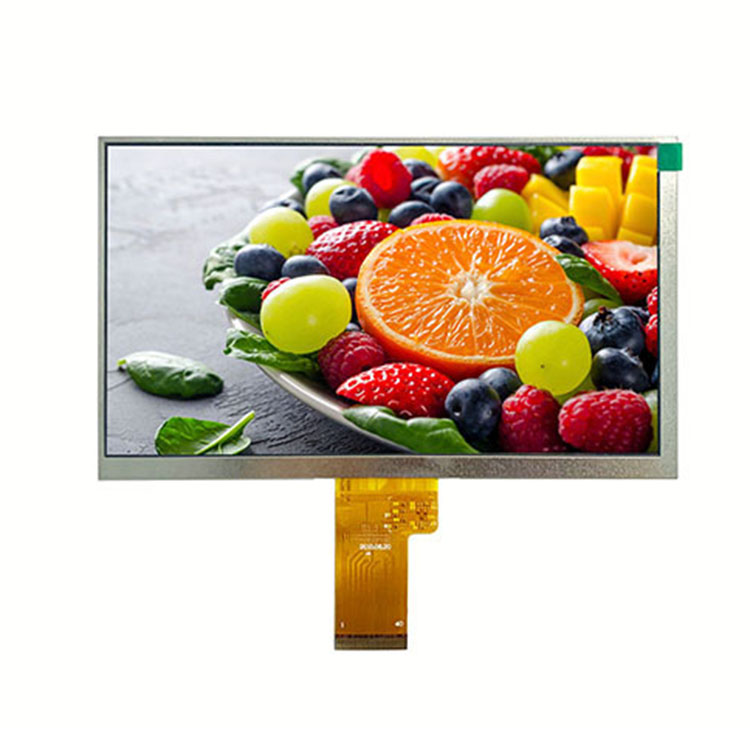Views: 234 Author: Vickey Publish Time: 2024-02-28 Origin: Site








Today, we're diving into the fascinating world of LCD displays and exploring the nuances between two popular types: IPS and LVDS. These technologies play a crucial role in the visual experience of our electronic devices, so let's unpack their unique features and benefits to help you understand which one might be the right choice for your needs.
If you've ever marveled at the stunning display of your smartphone or been impressed by the vivid colors on your monitor, chances are you were looking at an IPS TFT LCD display. IPS, which stands for In-Plane Switching, is a display technology known for its wide viewing angles, accurate color reproduction, and superior contrast ratio.
One of the standout features of IPS displays is their ability to maintain consistent colors and brightness levels even when viewed from extreme angles. This makes them perfect for applications where multiple people may be viewing the screen from different positions, such as smartphones, tablets, and monitors.
When it comes to color accuracy, IPS displays are second to none. They can reproduce colors with remarkable precision, making images and videos look lifelike and vibrant. Whether you're editing photos or watching movies, an IPS display ensures that you see every detail in all its glory.
Popular devices that use IPS displays include the iPhone, iPad, and high-end computer monitors. These devices are lauded for their stunning visuals and seamless user experience, all thanks to the superior technology of IPS TFT LCD displays.

Next, let's delve into LVDS (Low-voltage differential signaling) technology. Unlike IPS displays, which focus on image quality, LVDS displays prioritize high-speed data transmission and efficient connectivity between devices. LVDS technology utilizes a differential signaling method to transmit data at fast speeds while minimizing electromagnetic interference and power consumption.
One of the key advantages of LVDS displays is their ability to facilitate high-speed data transfer between devices. Whether you're using an automotive display, an industrial monitor, or medical equipment, LVDS technology ensures that data is transmitted swiftly and reliably, making it ideal for applications that require real-time information processing.
Additionally, LVDS displays are known for their low electromagnetic interference, which means that there is minimal signal distortion or noise during data transmission. This quality makes LVDS technology a preferred choice in environments where electromagnetic interference can impact the performance of electronic devices, ensuring clear and uninterrupted communication between components.
When it comes to power consumption, LVDS displays are designed to operate efficiently, making them a practical choice for devices that require long battery life or energy-saving features. By optimizing power usage without compromising on data transfer speeds, LVDS technology strikes a balance between performance and energy efficiency.
When it comes to choosing between IPS TFT LCD displays and LVDS TFT LCD displays, there are several key factors to consider. Let's take a closer look at how these two technologies stack up against each other:
Viewing Angles and Color Accuracy: IPS displays offer wide viewing angles and superior color accuracy, making them ideal for applications where image quality is paramount. LVDS displays may not have the same viewing angles as IPS displays, but they excel in high-speed data transmission.
Power Consumption and Data Transmission: IPS displays tend to consume more power than LVDS displays, making them less energy-efficient in comparison. On the other hand, LVDS displays are known for their high-speed data transmission capabilities, making them the preferred choice for applications where speed is crucial.

Choosing the Right Display Technology: When deciding between IPS and LVDS displays, it's essential to consider the specific requirements of your application. If you prioritize color accuracy and wide viewing angles, an IPS display may be the best choice. On the other hand, if you need high-speed data transmission and low power consumption, an LVDS display may be more suitable.
Case Studies: To get a better idea of how IPS and LVDS displays are used in real-world applications, let's explore a couple of case studies. For example, a gaming monitor may benefit from an IPS display for its vibrant colors and wide viewing angles, while a medical device may rely on an LVDS display for its fast data transmission and low power consumption.
The differences between IPS and LVDS displays highlight the diverse range of options available in the world of LCD technologies. Whether you're a visual connoisseur seeking impeccable image quality or a tech enthusiast looking for seamless data transmission, there's a display technology that caters to your requirements and enhances your electronic experience. So, the next time you're shopping for a new device or upgrading your current setup, keep these insights in mind to make a choice that truly reflects your preferences and priorities.